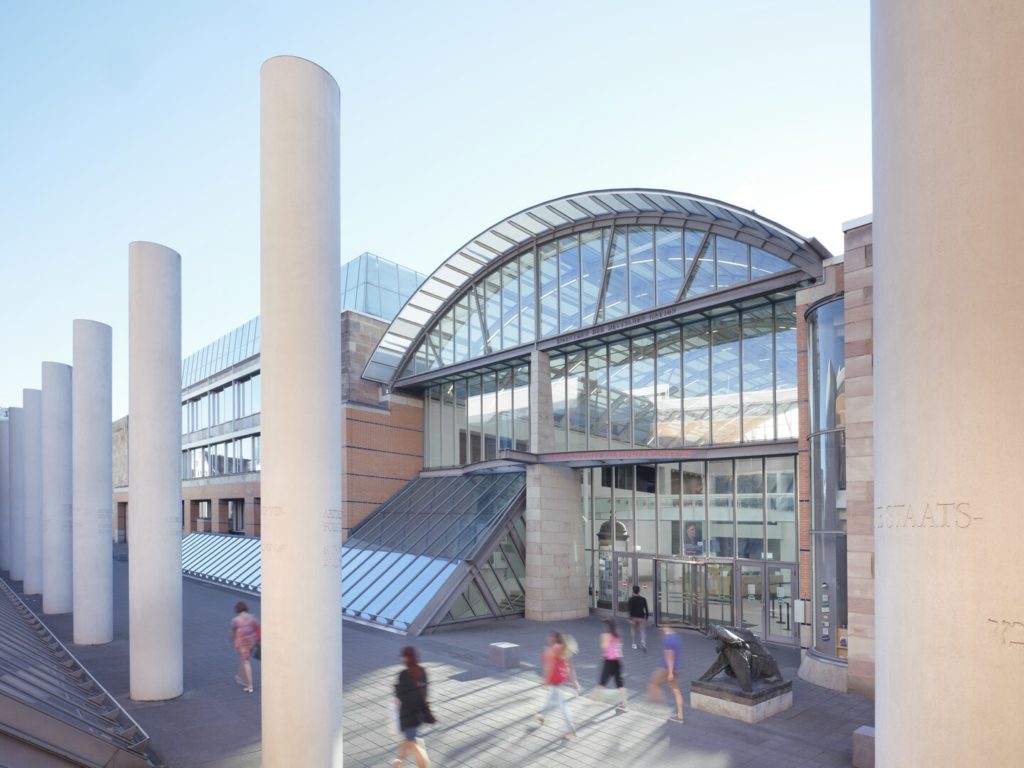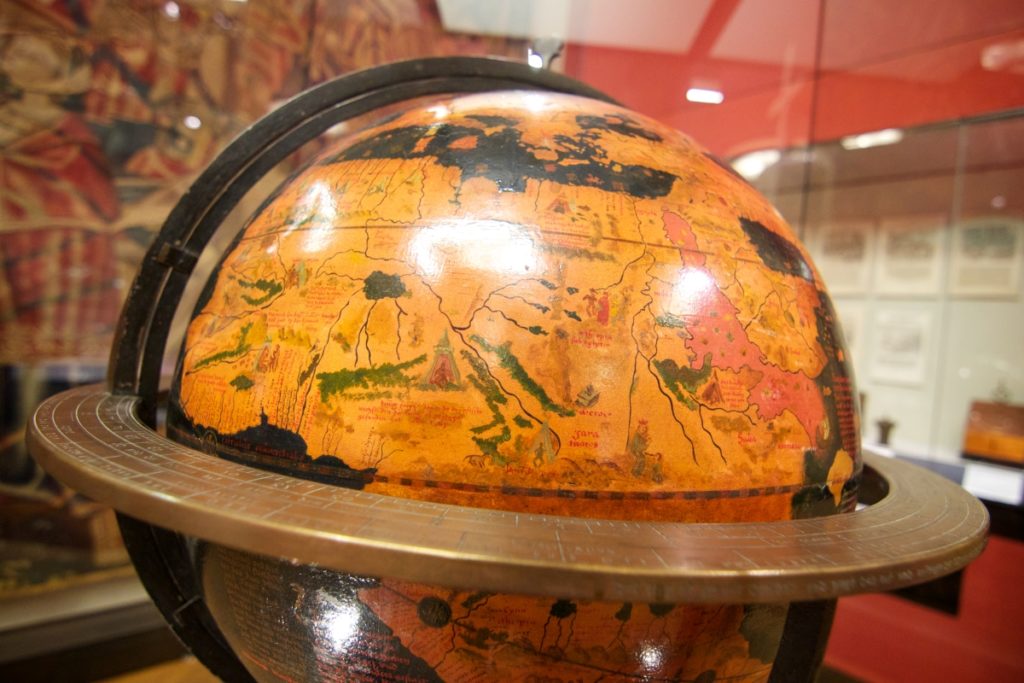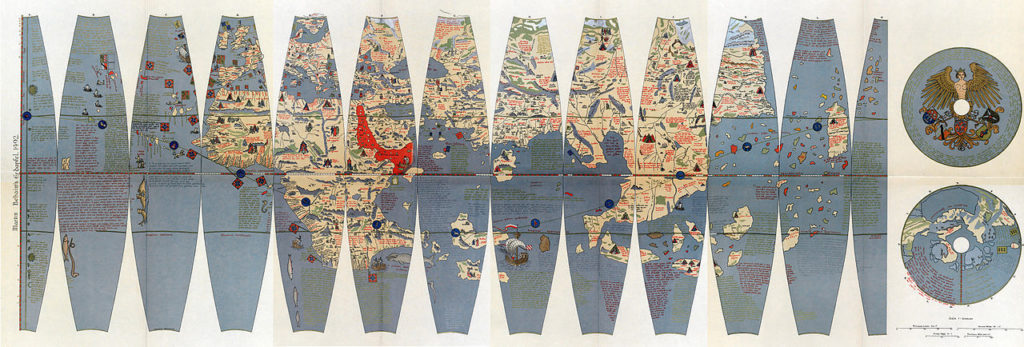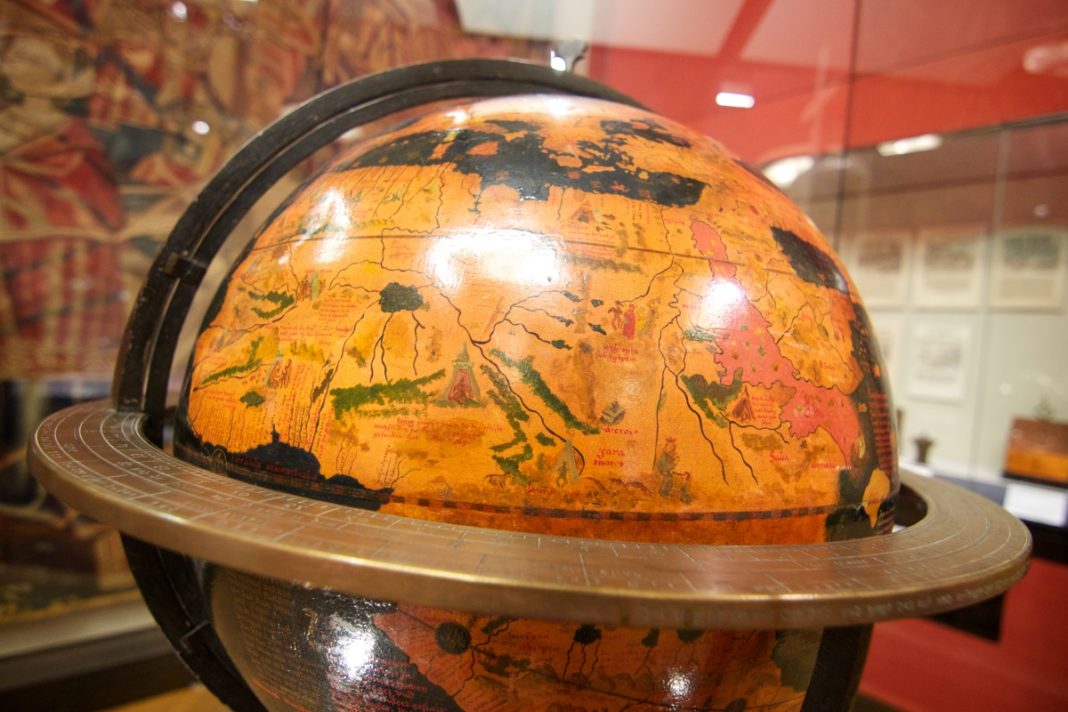The Germanisches Nationalmuseum is a museum in Nuremberg, Germany. Founded in 1852, it houses a large collection of items relating to German culture and art extending from prehistoric times through to the present day. The museum is Germany’s largest museum of cultural history. Out of its total holding of some 1.3 million objects (including the holdings of the library and the Department of Prints and Drawings), approximately 25,000 are exhibited.

In 1.3 million objects, Erdapfel is one of the most notable objects in the museum collection. The Erdapfel is a terrestrial globe produced by Martin Behaim from 1490 to 1492. The Erdapfel is the oldest surviving terrestrial globe. It is constructed of a laminated linen ball in two halves, reinforced with wood and overlaid with a map painted on gores by Georg Glockendon. The map was drawn on paper, which was pasted on a layer of parchment around the globe.

The Americas are not included, as Columbus returned to Spain no sooner than March 1493. The globe shows an enlarged Eurasian continent and an empty ocean between Europe and Asia. The mythical Saint Brendan’s Island is included. Cipangu (Japan) is oversized and well south of its true position.

From its creation until early in the 16th century, it stood in a reception room in the Nuremberg town hall. After that time, it was held by the Behaim family. In 1907, it was transferred to the Germanic Museum in Nuremberg. In 2023, Erdapfel was admitted to UNESCO’s Memory of the World.
According to the Internet














